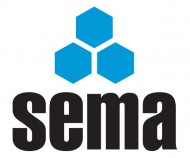This month we have a question regarding the correct standard that should be consulted when using in rack sprinkler systems. Then we look at what should be considered when installing and using racking on a mezzanine floor.
 Sprinkler Limits
Sprinkler Limits
Q. We are looking for the correct standard showing acceptable limits of in-rack sprinklers within the VNA pallet rack?
A. The design of sprinkler systems is covered in various codes, publications and standards e.g. EN12845 Fixed firefighting systems – Automatic sprinkler systems – Design installation and maintenance.
In the UK and most of Europe the exact requirements for sprinklers depends primarily upon the Insurance requirements. Building Regulation or Health and Safety legislation may also be relevant however; insurance requirements are typically the determining factor. As far as Insurance is concerned there are two main reference sources; Factory Mutual (FM) and Loss Prevention Council (LPC).
You should also consult National safety/building regulations for the relevant country.
FM guidelines are widely used in the USA whereas LPC is more common in Europe. You can get information on both of these organisations through an internet search engine. FM have a series of datasheets (available via the internet) whereas LPC tend to publish Design guides (available on-line via specialist bookshops)
There is some limited information with respect to clearances in EN15620 – Adjustable pallet racking – Tolerances, deformations and clearances but the primary source is the Insurers and requirements of FM and LPC.
All the above can be gleaned from the SEMA Code of Practice on the Use of Pallet racking which is available as a free download from the SEMA website.
To Bolt or not to bolt
Q. Could you advise me on some racking I am interested in. The racking is 2440 mm high x 610 mm wide and we would be hand stacking it. We are looking to put this on a mezzanine floor, so will it need to be bolted down?
A. It sounds like you plan to use the ‘racking’ as low rise hand loaded shelving. The SEMA code of practice for hand loaded low-rise shelving deals with this subject http://www.sema.org.uk/guides.asp.
Much of this document deals with structural design requirements but the bit that appears to be of primary interest to you is height to width ratios (H:W) and I’ve extracted this below
14.2 Height to Depth Ratios
14.2.1 The height of the shelving for the purpose of assessing height to depth ratios shall be the height to the top of the topmost loaded shelf.
The depth of the shelving shall be the overall depth of the frame, Where shelving is joined together back to back to form double sided runs, the depth of the shelving shall be the overall depth of the two frames and the space between provided that the links joining the frames together are spaced at not more than 2.0m centres vertically.
14.2.2 For height to depth ratios not exceeding 4:1 the shelving can be free standing without the need to fix to floor, walls or adjacent structures. Care should be taken in all cases to ensure that unsuitable floor coverings are identified. For instance, thick carpet can result in unstable structures and might need to be removed.
14.2.3 For height to depth ratios above 4: 1 but not exceeding 6 to I the minimum requirements for floor fixings shall be as follows:
Where shelving Is subjected only to gravity loads plus incidental horizontal forces from loading and off-loading of shelves, each upright on the perimeter of a run shall be fixed to the floor through its base plate by a bolt, stud or other such fixing capable of safely resisting a horizontal shear load of not less than 3kN and a tensile force of not less than 2kN.
All racking and shelving should have a Load Notice attached in order that you can use it safely and the following is a link to the SEMA web-site – http://www.sema.org.uk/guides.asp. Health and Safety authorities will generally check that racking/shelving has a load notice attached and, if not, may take action against the employer.The load notice will give information on the safe loads that can be applied to the shelving as well as general safety information and advice. The safe working load (SWL) of shelving depends upon many factors such as the configuration of the rack, the “duty” of the members, quality of installation, bracing, the manufacturer etc. etc. and is normally derived by the manufacturer using codes of practice and structural engineering theory augmented by testing.
SEMA does not hold load data for the various suppliers of racking and you should approach the equipment supplier for this data.
You also say that the shelving is to be placed on a Mezzanine floor. You should check (with the supplier of the mezzanine floor) that it is capable of carrying the applied loads and, in particular, that it is capable of carrying the local (point) loads beneath the shelf uprights – this is relevant for all mezzanines but is particularly important if the mezzanine floor has timber or open-grid type floor decking.
You should also ensure that the addition of the shelving on the mezzanine does not compromise any fire escapes etc.




Comments are closed.